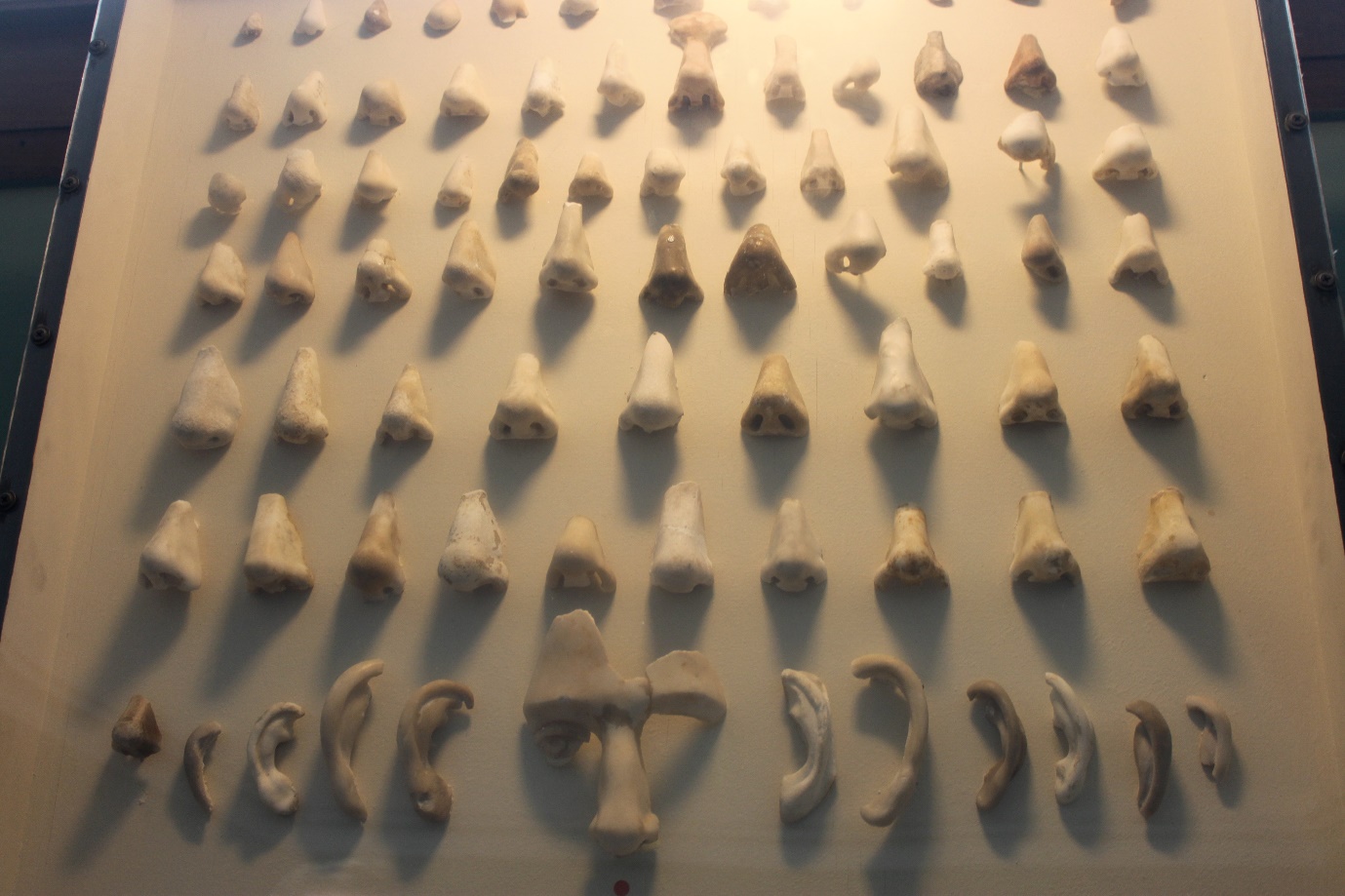
October 23, 2015, by Alex Mullen
Effaced: the missing noses of classical antiquity
Mark Bradley explores an important cross-cultural phenomenon.
A display cabinet in the Ny Carlsberg Glyptotek, Copenhagen, exhibits scores of disembodied noses (and various other appendages) from its Greek and Roman sculpture collections. This macabre collection of body parts was assembled in 1981 out of marble and plaster noses that had been deliberately removed by the museum’s curators from classical sculptures during a post-war ‘de-restoration’ campaign: because they were all fakes, this defacement was part of an initiative to render the Glyptotek’s sculpture collections more ‘authentic’.
So far so good, but this cabinet also tells a more sinister story about the mutilation of faces in antiquity that can give us all pause for thought.
Noses on the vast majority of ancient stone sculpture are missing. Some of these have inevitably broken off accidentally, but it is also evident that an overwhelming number of them have been deliberately targeted. A black basalt head of the emperor Tiberius’ nephew Germanicus in the British Museum shows a nose that has been clearly chiselled away, probably at the same time that early Christians carved a cross into the forehead of this pagan portrait.
Ancient iconoclasm is one thing, but this wanton destruction of ancient portraits might also reflect real-life facial mutilation across the ancient world from Homeric Greece, the Persian Empire, Classical and Hellenistic Greece, Republican and Imperial Rome right through to the Byzantine period. In the Odyssey, one of Penelope’s suitors (dead or alive, it is not clear) is dragged outside the palace and his nose and ears are cut off, followed by his genitals, hands and feet; Heracles earned the nickname ‘Nose Docker’ on the grounds that he cut off the noses of heralds who told him what he didn’t want to hear; and nose mutilation was a punishment sometimes meted out to adulterers. In Egypt there was even a settlement called Rhinokoloura (“the city of docked noses”) where banished criminals whose noses had been sliced off were sent into exile. The Greeks had a single term for nose-docking (‘Rhinokopia’), and this was regularly dealt out as a punishment during the Byzantine empire: the emperor Justinian II, who was deposed and punished in this way at the end of the seventh century so that he would never reclaim the throne again (the emperor was expected to be the perfect image of God, free from any deformity), against all odds gathered an army and marched back on Constantinople a decade later, sporting a golden prosthetic nose over his disfigured face and seized back his title.
Along with gouging out eyes, slicing off ears, cutting out tongues, castration, dismemberment and other ghoulish punishments, nose-docking has been a widely recognized form of punishment not only in the classical world, but also in Pharaonic Egypt, pre-Colombian America, the Arab world, early India and Medieval Europe, and in recent years occasional instances in South Asian countries have attracted media attention. Across all these contexts, it has been a powerfully symbolic gesture associated with disempowerment, humiliation, visibility, exclusion, lost identity and pain.
A new collaborative, cross-disciplinary starter project funded by the Wellcome Trust called ‘Effaced from History? The Disfigured and their Stories from Antiquity to the Present Day’, led by Patricia Skinner (University of Winchester) involves scholars from history, classics, archaeology, art history and the history of medicine, with expertise in bodily disfigurement in ancient, medieval and modern contexts and works alongside Changing Faces, a UK-based charity that supports individuals with facial disfigurements. The group’s first joint meeting took place in mid-October, and we are now in the process of developing a bid for an ambitious four-year project exploring this important and controversial theme in more detail.
Image: The ‘Nasothek’, Ny Carlsberg Glyptotek, Copenhagen, room 14, author Mark Bradley.

Great post, Mark. Famous noseless of today: Voldemort.
The nose is the most distinctive part of the face, it gives the character profoundness of the whole face. Seek a forensic artist who builds face out of skulls to give you this understanding.